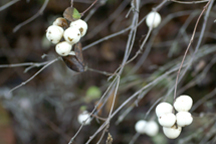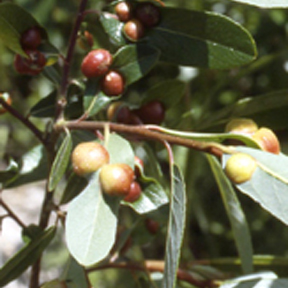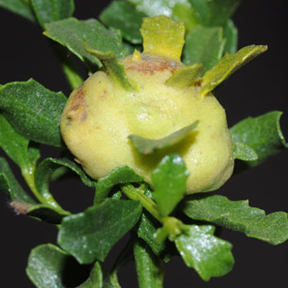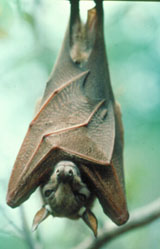Background

Snowberry
|
Working
in teams of 2, investigate one of the following problems. Talk to the instructor in person (during office hours) by Feb 15 to select your project. Earlier is better because topics go on a first-come, first-served basis.
Ethnobotany
Food spoilage is one of the biggest concerns for food safety worldwide. In developed countries, the microbial safety of foods continues to be a major concern to consumers, regulatory agencies and food industries throughout the world. Roughly one-third of the food, approximately 1.3 billion tons, produced in the world for human consumption every year gets lost or wasted. Fruits and vegetables, plus roots and tubers have the highest wastage rates of any food. Even if just one-fourth of the food currently lost or wasted globally could be saved, it would be enough to feed 870 million hungry people in the world.
Many food preservation strategies have been used traditionally for the control of microbial spoilage in foods but the contamination of food and spoilage by microorganisms is a problem yet to be controlled adequately. The original use of spices was for food preservation..Although synthetic antimicrobials are approved in many countries, the recent trend has been for use of natural preservatives, which necessitates the exploration of alternative sources of safe, effective and acceptable natural preservatives. Plants contain innumerable constituents and are valuable sources of new and biologically active molecules possessing antimicrobial properties. Plants extracts either as standardized extracts or as a source of pure compounds provide unlimited opportunities for control of microbial growth owing to their chemical diversity.
The World Health Organization (WHO) projects the terrifying prospect of 10 million AMR-related deaths per year globally by 2050.
| Purpose
Working in teams of two students, you will
1. Lab work:
- Determine whether a plant extract has antimicrobial properties.
- Determine the mimimum inhibitory and bactericidal or fungicidal
concentrations.
- Make a growth curve using a sublethal concentration.
2. What is your hypothesis/alternate hypotheses?
3. How many trials will you do?
4. What will you use for controls?
5. Discuss the significance of your results
6. Write your report in the proper
format.
Hypotheses
State your hypothesis
(& alternative hypotheses)
Materials Available
You must turn in the Supply Request
form before you begin working.
All information must be kept iin your lab notebook.
|
Results
Displaying data
Discussion & Conclusions
Literature Cited
You are encouraged to read all the available information on
the topic for your paper. To select appropriate references,
you must evaluate your sources of information. Print and electronic
encyclopedias are often good to get familiar with a topic:
however, these are not appropriate references for
a research paper. The most reliable information is that published
in peer-reviewed journals. Peer-reviewed means that the author's
work has been read and accepted by colleagues in his/her discipline.
Start your literature search with PubMed, Google Scholar, or another
science database and search on your topic. Read the abstracts
and keep a list of interesting articles. Note, you must read
and cite the articles. Highwire, PubMed, and other databases
are not citations; these are indexes to articles.
For each topic, there some articles to get you started
but these should not constitute your entire literature review. |
| |
|
Some notes to get you started:
Starting references. These cannot be used for your Journal article assignment.
Abifarin, T. O., Otunola, G. A., & Afolayan, A. J. (2020). Assessment of the phytochemical, antioxidant and antibacterial activities of Heteromorpha arborescens (Spreng.) Cham & Schltdl. leaf extracts. F1000Research, 9, 1079. https://doi.org/10.12688/f1000research.25197.1
Cowan, M.M. Plant Products as Antimicrobial Agents. Clinical Microbiology Reviews 12:564-583, Oct. 1999.
Emmert, E.A.B., J.L. Milner, J.C. Lee, K.L. Pulvermacher, HA. Olivares, J.H. Clardy, and J. Handelsman. Effect of Canavanine from alfalfa Seeds on the Population Biology of Bacillus cereus. Applied and Environmental Mirobiology 54:4683-4688, Dec. 1998.
Hancock, R.E.W. and D. S. Chapple. Peptide Antibiotics. Antimicrobial Agents and Chemotherapy 43:1317-1323, June 1999.
Plants. Select a plant for which there are no publications on antimicrobial activity.What will you test: roots, aparenchyma, epidermis,, fruit parts? You are doing original research, something no one else has done. My list is not all inclusive, just something to start you thinking.

|
 |
Willow galls |
Coyote brush gall |
Insect galls (Baccharis, Salix, or Quercus)
Stenocereus
Selenicereus
Opuntia
Crassula
Heuchera
Eriogonum
Saw palmetto
Heteromeles arbutifolia
Heracleum maximum
Anaphalis margaritaceaÂ
Eriophyllum staechadifolium
Baccharis pilularis
Delairea odorata
Leptospermum
Buxus sp.
Chorogalum
Pinus radiata
Possible procedures.
Disk diffusion assay
Well-diffusion assay
MIC/MLC
Growth curve
Isolating active compounds
Cultures available. The task is not to test all of these. You will need to think and read about test organisms.
Aspergillus sp.
Candida spp.
Escherichia coli
Micrococcus luteus
Salmonella enterica
Shigella sonnei
Staphylococcus aureus
Saccharomyces cerevisiae
Penicillium sp.
Pseudomonas aeruginosa
Streptococcus pneumoniae
Streptococcus pyogenes
Streptococcus mutans
|




